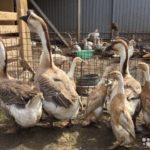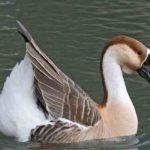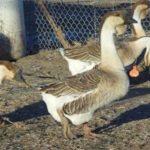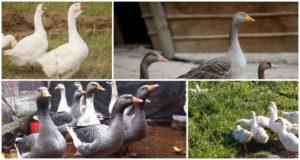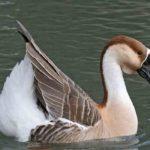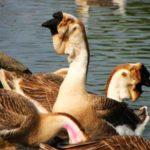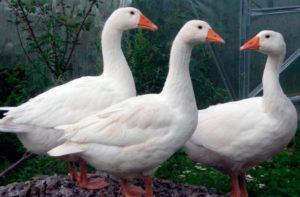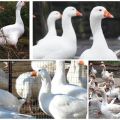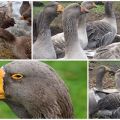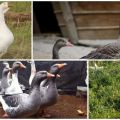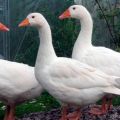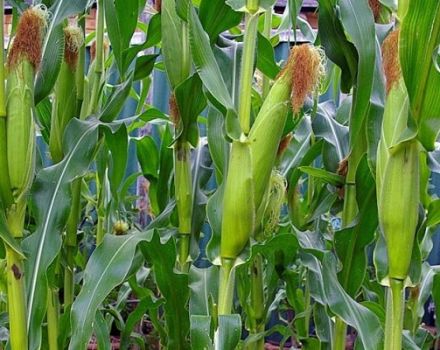Description and characteristics of African geese, breed breeding rules
The ancestor of the African goose, despite the name, is considered to be the wild Chinese. This poultry has a large, fleshy body. In terms of size, representatives of this breed occupy the third place among heavyweight geese. Moreover, the bird is characterized by a calm disposition. Due to the characteristics described, African geese are widely used in domestic livestock.
The appearance and characteristics of African geese
Among the features that characterize African geese are the following:
- gray-brown or brown feathers;
- the presence of a pouch "wallet";
- the absence of fatty folds on the abdomen, typical for other geese;
- wide and powerful body;
- compact head on a long neck;
- black beak.
An important feature of the representatives of the African breed is a bump on the forehead, which increases as it grows. The same thing happens with a black stripe running down from the head along the back.
African geese are considered centenarians. Oviposition occurs over several years. Despite the fact that geese of this breed do not impose strict requirements for care, birds in cold regions must be kept in equipped aviaries. At sub-zero temperatures, the subbeak "wallet" freezes. The offspring of this breed develops slowly. Young animals reach sexual maturity by two or three years. On average, the goose lays up to 20-40 large eggs during the year.
Pros and cons
African geese are bred mainly for meat. Feathers of these birds are used less often.
Subtleties of maintenance and care
As noted, the representatives of this breed do not have special requirements in terms of maintenance and personal care. Birds need access to water bodies. If this cannot be organized, then it is recommended to install a structure with water on the site, where geese can swim.
These birds live in flocks, although one individual can be kept.When designing a pen, the area of the interior is determined at the rate of 1 square meter per adult male. The poultry house for the African breed must be insulated by sealing all the holes. Geese do not tolerate drafts, because of which diseases develop and offspring die.
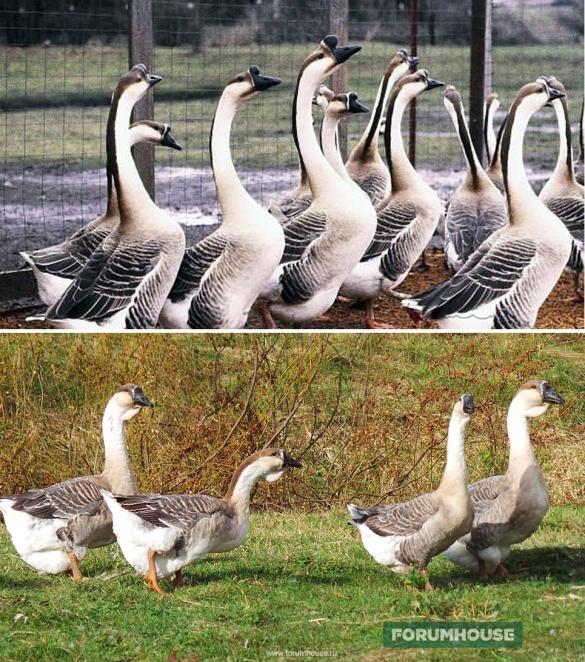
Feeders and boxes with mineral feed must be installed in poultry houses. A layer of sawdust and sand should be applied to the floor. It is recommended to arrange nests and an access hole inside the house.
Drawing up a diet
The basis of the diet in the warm season is fresh grass. Geese eat:
- cattail;
- reeds;
- sorrel;
- yarrow;
- dandelion and other herbs.
Every day, adults are recommended to feed up to two kilograms of green grass. Additionally, roughage should be given in the evenings:
- potatoes;
- beets;
- corn;
- corn.
Also, additives such as table salt, fine gravel or chalk should be added to the diet. This stimulates the digestion of the bird. Geese need to drink plenty of water. The water must be poured so that the bird can completely immerse its beak and nostrils. To accelerate weight gain, oats, wheat, corn and barley are included in the diet.
Youngsters should be given bread soaked in water. In the second week, green grass and boiled potatoes are introduced into the diet. By the month, young animals can be taken out to free grazing.
During the winter, African geese are switched to solid feed, including chopped millet, corn and wheat. The bird is recommended to give food waste, boiled potatoes with beets and carrots. Pine and spruce needles are included in the diet as a vitamin supplement.
Breeding features
African geese reach sexual maturity by two years of age. However, the productivity of males gradually decreases after four years. Conditions of detention also affect this. At temperatures below +23 degrees, the gander becomes inactive.
In females, sexual maturity occurs earlier. The most productive period is considered to be up to the first three years. It is recommended to leave up to four geese per gander. This does not exclude the possibility of pair formation. Representatives of the African breed, like a number of others, often choose their "favorite" female. In such cases, the gander is discarded. The same should be done if the male begins to show aggression. But such situations are less common for the African breed than for others.
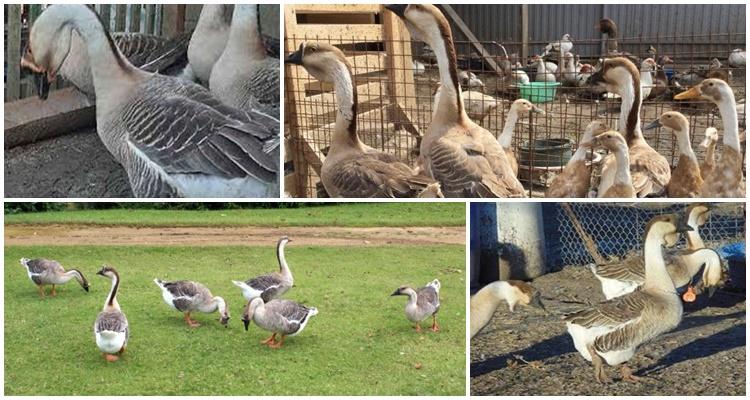
In addition, every 3 years it is recommended to introduce a new gander into the flock to renew the blood.
Diseases and treatment
For African geese, infectious diseases caused by non-compliance with the conditions of detention are more characteristic. The risk group mainly includes young animals. The pathologies that are more often diagnosed in birds include the following:
- Viral enteritis. It mainly affects the liver, causing the death of up to 95% of the offspring. Enteritis is not treated. But as a prevention of infection, young animals are vaccinated.
- Salmonellosis. A serious illness affecting the entire body. It is treated with "Furazolidone".
- Colibacillosis. The most common disease causing weakness. It is treated with Baitril.
- Pasteurellosis, or cholera. Usually develops due to parasites. Treatment is with antibiotics.
Also, geese often have a blockage of the esophagus caused by dry food. The treatment is carried out with sunflower oil.
